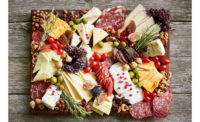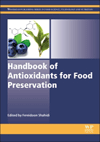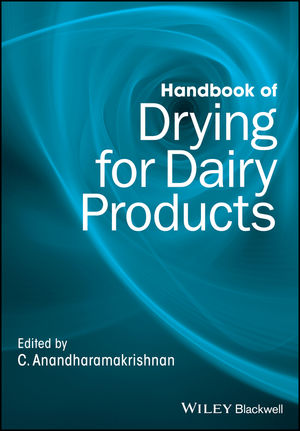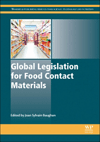FlavorSum makes predictions for 2025

FlavorSum's Lisa Jackson took out a crystal ball to see what ingredient trends we may see next year.
Seeking Serenity
A glance at news headlines, your social feed, or your to-do list after your last meeting about new deadlines can accelerate your heart rate. As anxiety levels rise, your feelings of control, judgment, and productivity often diminish. Like many people, you may turn to foods, beverages, supplements, or phone apps to alleviate the stress of daily living and calm the ‘fight or flight’ response. Stress-relief solutions are often temporary, however, leading to an increased desire for serenity, a learned emotion that can help people feel more resilient when dealing with challenges.
The shift toward a serene state of mind is growing and affecting food and beverage trends. A review of social discussions reveals the following statistics:
PURSUING HOLISTIC HEALTH
Unlike a symptom-based approach to wellness, holistic health addresses health’s physical, mental, emotional, social, and spiritual components. The goal? Achieving a balance that leads to serenity and extends beyond people to include communities and the environment. The 2024 IFIC Food and Health Survey reveals more people are following specific eating habits to feel better and protect their long-term health.
More North Americans understand the links between what they eat and the interconnected health of the performance of their brain, digestive system, heart, immunity, and mood. We expect growing demand for foods, beverages, and ingredients designed to meet holistic health goals and support the pursuit of serenity.
COMFORT REDEFINED
Comfort foods and their connection to stress-reducing dopamine and serotonin underpin recent survey results showing 70% of Americans would choose comfort over gourmet meals. We anticipate an evolution in comfort food in 2025 in recognition of the growing desire for well-being.
With conversations about healthier comfort foods up more than 5% in the last year, look for more food and beverage brands revamping the classics by:
FLAVORS THAT CUE SERENITY
People are investigating flavors and ingredients to help them realize serene experiences. Specific tastes linking more often to goals for serenity and healthier comfort foods include:
Premium, Please
Elevated eating is a known food and beverage trend among North Americans, but how brands can deliver premium experiences is changing. The increased interest in premium reflects the cultural shift toward food activism since shoppers seeking control associate premium claims with higher quality (Mintel). Premium is an active topic in the social space, with discussions up by 14% in the last year. Innova reports that about 2 in 5 shoppers globally plan to spend more on premium food for in-home consumption in 2025 to deliver mental and physical benefits.
PREMIUM — INSIDE AND OUT
We often link indulgence with premium foods and drinks, and premium/indulgent flavors continue to influence food choices among 20% of North Americans (Innova). But people evaluating ‘premium-ness’ are more likely to consider the entire brand in 2025, meaning formulators and marketers need to consider ingredient selection, packaging, and messaging.
For example, innovations with premium claims are more likely to offer functional benefits, deliver cleaner ‘free-from’ formulas, and demonstrate heightened environmental concern.
While current economic conditions restrict premium purchases for some shoppers, premium positionings are feasible to meet the needs for budget-friendly options. Brands offering high-quality ingredients, giving back to communities, or incorporating some sustainable manufacturing processes can build a premium reputation that people trust enough to occasionally buy.
FROM SIMPLE PLEASURES TO COMPLEX CRAVINGS
Premium’s connection to indulgence often leads brands to develop complex taste experiences. Associations between premium and complex flavors increased by 80% in social discussions.
Over the last five years, almost half (47%) of North American food, beverage, and health launches featured combination flavors, with 10% of combo flavors featuring more than 2 profiles (Mintel). Profile examples showing growth include adding fruit and citrus to a berry flavor (like raspberry, pineapple, and passion fruit) or mixing berry, beverage, and spice notes (such as strawberry tamarind margarita flavor).
But simplicity is a viable path to meeting desires for an upscaled food or beverage. Discussions about simple flavors increased by 17% in the last year, and classics like chocolate, strawberry, and vanilla continue to rank as the leading flavors launched in North America. Posts linking simple flavors to coziness grew by over 80%, with brands delivering a luxurious experience with premium versions of ‘the basics.’
PREMIUM-IZING FLAVOR
Premium flavor profiles generating buzz across complex, simple, and cozy include the following.
Examples of complex premium flavors are:
Tell Me a Story
When we share a story, we connect with others because they relate to similar experiences they have had in their lives. Storytelling unlocks how people see each other and unites them through commonalities. For brands, stories can open doors to attract new buyers, facilitate understanding of value propositions, and influence loyalty.
Flavor stories as a food and beverage trend grew by 54% in social discussion. Some of the fastest-growing types of flavor stories have plotlines that share how brands are:
REGIONAL ROOTS
Place and terroir matter when people are selecting foods and beverages. Sharing a flavor’s origin story helps people connect the brand to a region known for producing superior or unique flavors. Recognizable provenance, like Key lime, Alphonso mango, Rainier cherry, or Tahitian vanilla, elevates the quality perceptions of familiar tastes and aligns with interest in traceability. Adding regional stories to a flavor can bring exotic locales closer to home.
Although provenance is not a new food and beverage trend, regional flavor expansion will likely continue in 2025. We expect more brands across various categories— from snacks and ice cream to beverages and cookies to tap into regional inspirations.
LOCAL LEGENDS
Local flavors as a food and beverage trend jumped 35% in social discussion as brands bring famous tastes into new categories. Flavors embedded in local culture and identities are gaining broader recognition across North America. For example, people are incorporating Faygo soft drink flavors into popsicles. St. Louis Gooey Butter Cake flavor is now in cocktails and ice cream, and Louisiana’s famous beignet flavor is moving into coffee, ice cream, popcorn, and spirits.
Finding the right local legend for your brand will take some time as you research the market and assess which flavor(s) make sense to your product buyers. Look for tastes anchored in a strong, universally resonant storyline (like whimsy, celebration, or uniqueness) to provide focus.
Legendary flavors often tap into universal human experiences—such as the joy of discovery, the pleasure of indulgence, or the excitement of something new—making them appealing to multiple generations.
STORIED FLAVORS
Flavor stories getting buzz in the social landscape and likely to build momentum in 2025 range from familiar to novel, with fast-growing profiles including the following:
Meet Me in the Moment
Snacking continues to meet nutritional needs, accounting for half of 2024 eating occasions and attracting almost half of North Americans to the snack cabinet three or more times daily. The line between meals and snacks is increasingly blurry, with 35% more shoppers adding snacks to their main meals. Taste expectations, nutritional concerns, and desired experiences are always evolving, creating challenges for brands as they strive to deliver at the right time and place in 2025.
Because snacks are often meal replacements, leading (and fast-growing) nutritional needs expressed in the social landscape include familiar ingredients like protein and fiber. Shoppers are savvier about nutrition and health, leading to more conversations about elements like electrolytes (hydration), amino acids (energy), and omega 3 (heart health).
Taste expectations echo familiar food and beverage trends with growing interest in rich, intense, sweet and savory, and tropical profiles.
Foods and beverages in any form, from main meal component to snack, are rarely daypart agnostic. FlavorSum’s research can help you identify how best to meet your buyers in the moment next year.
Download an infographic summarizing FlavorSum's 2025 Food and Beverage Flavor Trends here.
Looking for a reprint of this article?
From high-res PDFs to custom plaques, order your copy today!









